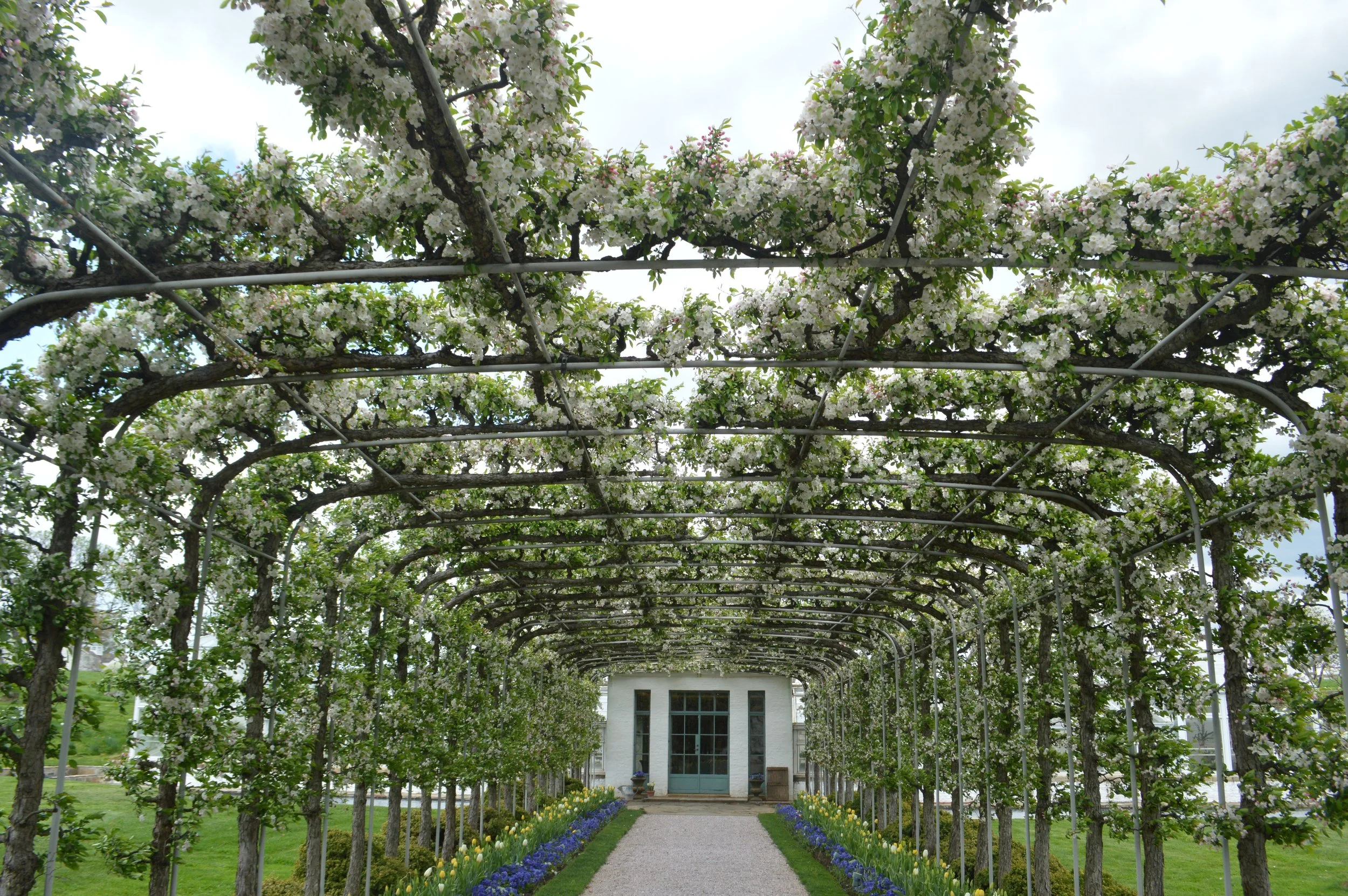Reflections of a Horticultural Apprentice
Thomas Bardroff
In this blog series, Oak Spring’s interns and apprentices share their stories of working and learning in our gardens, fields, forests and farm. This post was written by our 2022 Horticultural Apprentice, Thomas Bardoff.
In December of 2021, I started my journey as the Horticultural Apprentice at Oak Spring Garden Foundation. I’ve since celebrated my year anniversary working alongside the talented and intelligent gardeners on site. A full year later I’ve had many opportunities to have hands-on experience learning the Bunny Mellon way of horticulture. Everything from forcing bulbs, starting seeds, working in our cut flower garden, working with Mrs. Mellon’s topiary collection, meeting many lovely people on our open days, and many other aspects that are too many to list in a single post.
Truly, there has been much growth and I’ve been given responsibilities that I didn’t initially have. With growth comes reflection and I believe it’s important to reflect on where one started. One topic that I wanted to take a short time to revisit, and that I hold dear, is the pruning and structure of the stepover cordons that line Mrs. Mellon’s garden. Within the context of Mrs. Mellon’s garden, pruning the cordons was and is a pivotal learning experience for any gardener working here.
Photo by Thomas Bardoff.
Recalling January of 2022 on a cold morning, snow had freshly blanketed the ground and the garden was settled down and sleeping for the bitter Northern Virginia winter. I remember having a feeling of hesitation and uncertainty pruning on a very important piece of the garden. This had been the first piece of plant material I’d pruned on since starting as an HA. I was taught to have a vision of how a cut will affect the overall structure, growth, and development of a plant. However, in the dead of winter, envisioning what a fully leafed out plant will look like in the spring is difficult. Cutting back larger pieces felt like ruining years of work but with hesitation came an understanding that every cut would create new growth when the auxins began to push stem elongation in the early warmth of spring.
Photo by Thomas Bardoff.
Working with my set of Felco #2’s that I’ve had since 2017, I went to work removing dead wood, crossing branches, and diseased wood. I took special care to remember to spray my pruners with alcohol to help prevent the ever dreaded bacterial disease, fire blight (Erwinia amylovora), from spreading amongst our cordons. Over the course of the morning I made careful cut after cut until, finally, I was able to step back and feel a sense of accomplishment that I had completed my first round of pruning on our cordons. In my original post I likened the twisted gray branching to a gnarled abnormal rack of a deer. The branches in winter were like tines, casting a strong and defined shadow on the white gravel that lines the walkways of our lower terrace. This is still my favorite likeness to make when describing the shadows that are cast.
This initial experience gave me a good foundation and appreciation that I would use that same winter to prune our candelabra espaliers as well as the iconic focal point, the ‘Mary Potter’ crabapple arbor. While these were still met with some hesitation I felt I had a new found sense of confidence on working with our plant material and understanding that I didn’t have when starting. The application of knowledge was still the same in the winter: prune to the nodes to prevent dieback, remove any dead or diseased wood, and remember to spray your tools to prevent disease.
Photo by Thomas Bardoff.
Further in the year, during spring of 2022 I was able to see all the hard work come to fruition as our apples and pears fully leafed out and flowered! I was especially enamored with the falling flower petals of our ‘Mary Potter’ crabapple arbor that emulated an appearance of snow daintily moving with the cool spring breeze. But in order to get to this beauty, it all started with learning what a single cut does. Taking my first steps when pruning on those cordons in the winter projected me forward and gave me confidence to work as a horticulturist in Mrs. Mellon’s garden. While in theory, pruning is a straightforward and “easy” process to learn, it’s the reasoning that’s important to us. The idea that when you’re making a cut, you’re making it for the future of the plant and sake of the structure. It is the idea that in the spirit of Mrs. Mellon, we strive for perfection, so don’t be afraid to leap and make that first cut.
One year under my belt and I will continue to learn and make mistakes. I am by no means perfect, but just as the cordons do year after year, we as humans, grow. Learn from the mistakes and gain a strong developmental structure and understanding of yourself and what is to come in life. Send your branches high and your roots deep for years to come.
For those interested in learning more about the process of pruning touched on in this blog, register for our one-day workshop, Basics of Pruning, on Saturday March 25th, 2023. Click here for more info.







